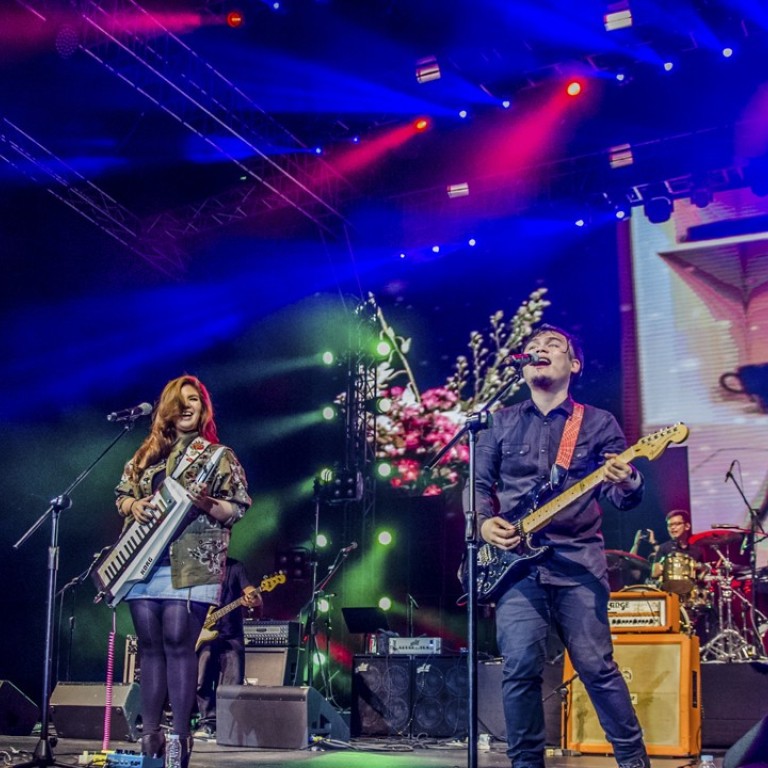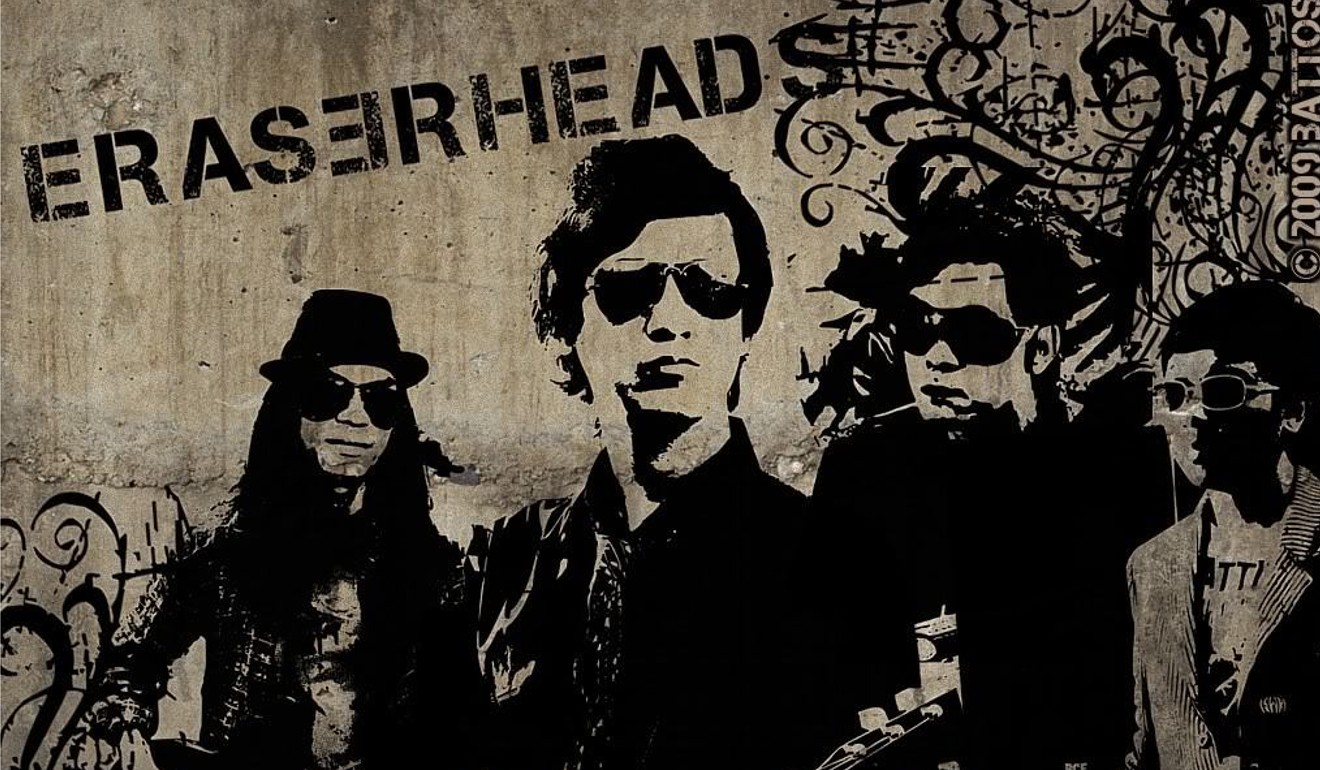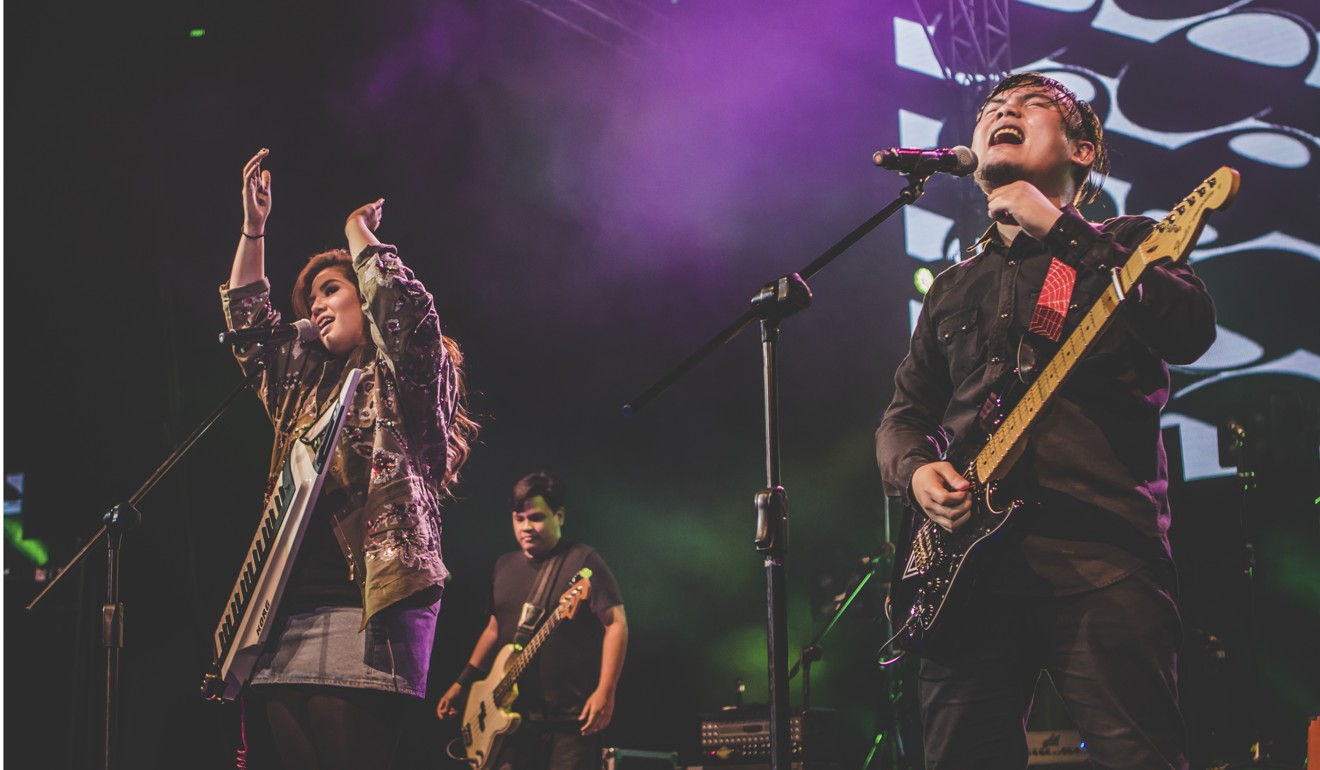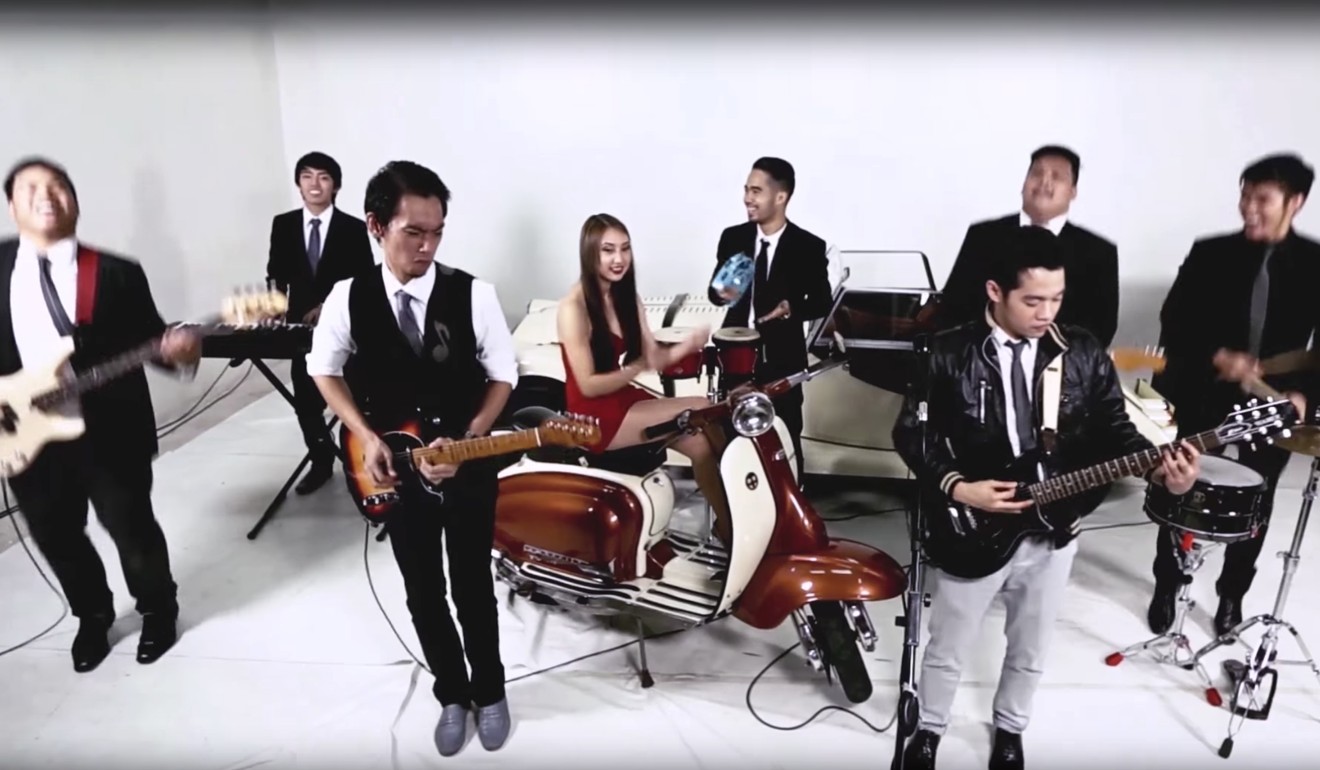
The Filipino indie bands who've found an audience through social media and the internet
For years the music scene in the Philippines was dominated by big labels and established stars, but the advent of sites including Bandcamp, SoundCloud and Spotify has made it possible for grass roots bands to promote themselves
Disruptive technology and the wide reach of the internet have been sweet music to the ears of the world’s independent bands that lack support from monolithic entertainment corporations.
Nowhere is it sweeter than in the Philippines, a country that is passionate about music – even if it’s just a trip to one of the country’s ubiquitous karaoke bars.
Backed by massive media and entertainment groups such as ABS-CBN, the country’s top acts are often television stars turned pop singers, but there’s a thriving independent music scene in the Philippines.
The angry sound from Hong Kong’s underground: the post-punk power of David Boring
Equipped with cheap and easy-to-use recording tools and platforms such as Bandcamp, SoundCloud and Spotify to promote their sound, ambitious independent musicians are finding an opportunity to break through the noise and carve out their own niche in Manila’s music scene.
Filipino indie artists are the most active in the country’s recording industry, according to local non-profit publication The Manila Review. And independent licensing agency Merlin says a growing number of indie musicians are emerging via self-release services. A few have even managed to use the reach of the internet to cross the line between indie and mainstream, expanding genre boundaries and redefining contemporary music in the country.
One example is Autotelic. Members of the Metro Manila-based group originally got together in 2012 to make heavy rock. The band formed as a side project for musicians who had all previously played in rock outfits. The driving force was Neil Tin, former lead guitarist of a punk band called The Naked Lights, and Josh Villena, former lead guitarist of Maya’s Anklet and Peryodiko.
Tin and Villena wanted to create something that would have a lasting impact on Filipino music, which would require venturing beyond the sounds they grew up with.
Historically, the Philippines has been heavily influenced by the American entertainment industry. Rock’n’roll was introduced in the 1970s, with stars including Elvis Presley, Chuck Berry and Jerry Vale enjoying massive popularity. Filipinos developed their own style, with lyrics in the local languages and dialects. This became known as Filipino rock, or “Pinoy rock”.

However, interest in the genre slowly waned when Electronic Dance Music (EDM) swept into the country in the early 2010s.
Autotelic recognised that EDM would have a lasting impact on music worldwide. Without losing their rock sound and artistic identity, the band decided to try out a fresh approach, infusing their new songs with electronica.
Wanting to expand traditional genre boundaries, in 2015 Autotelic crafted a new sound that band members believed would find wide enough appeal to be picked up by local radio stations.
According to Macadaeg, new listeners began to search for the band on Facebook, Twitter, and Instagram. “We always announce our gigs and band updates through social media, and we try our best to entertain every post and inquiry from our followers,” the drummer says.
Macadaeg says the internet has become the most effective platform to showcase the band and their music – the radio stations are already playing their songs. “We owe our exposure to social media and the buzz generated from it,” Macadaeg says.
Hong Kong rapper Fotan Laiki redefines success online as she uses music to ‘hold up mirror’ to the rigid society
Since the band was established, the number of Autotelic fans has grown steadily. They now have about 103,000 monthly listeners on the Spotify music streaming app alone, and more than 74,000 followers on Facebook.
Macadaeg says the band want to reach as many people as possible – which is always a struggle for an indie outfit. So they take any opportunity to perform, ranging from hosting regular gigs to playing at corporate events.
The band’s biggest fan base is in Metro Manila, especially among teenagers and young adults. Whenever they perform, crowds shout loudly to request the band’s two most popular songs: Laro and Gising.

Women from Pussy Riot use Russian prison experience as inspiration for art warning of political repression
But despite the band’s growing popularity, the members continue to struggle with drawbacks such as a lack of budget and disposable income. Although playing live generates a fair level of income, it’s not a living wage. So each member has another job.
Villena works as a designer for a brand of chilli garlic called Silly Garlic. Kai Honasan, who joined Autotelic in 2014 as a vocalist, also performs as a solo artist and released a pop EP that year. Tin works as an account manager for a design agency, while Macadaeg has a day job as a marketer for international schools in Metro Manila.

For some musicians, diving into the indie scene is a path to artistic renewal. Jensen Gomez had years of experience performing as a solo artist in the early 2000s, while under contract with Universal Records. But around 2010, Gomez wanted a more adventurous creative experience. He realised that being signed to major label wouldn’t allow him to fully express his creativity, because of the control a label exerts in the search for commercial success.

Jensen and The Flips was born. Gomez wanted the band to be in total control of their style and future. Image wise, they decided they wanted the group to be easily recognisable by always performing in button-down shirts and ties. Musically, they wanted to deliver a unique blend of indie pop and Motown soul.
It was a successful formula. In 2012, Jensen and The Flips were signed by Yellow Room Music, a local indie record label. In 2014, Gomez’s personal popularity was given a boost when Universal Records released one of his previously recorded solo albums, called Umpisa, which had been stuck in limbo for years following his departure from the label.
Jensen and The Flips released their debut album, Honeymoon, in 2015. It was distributed by MCA Records and the band inched their way into the mainstream.
“You need to be resourceful and have connections with the right people,” says Gomez.
The band are now fairly well known in Metro Manila, particularly around Makati and Quezon City. Gomez says the band have been playing gigs at local high schools in these areas, and demand for the band’s retro sound is high among Manila’s youth.
Jensen and The Flips – who have earned a reputation for energetic stage performances – once performed 23 gigs in a single month, Gomez recalls. The band’s songs have more than 170,000 monthly listeners on Spotify.
Gomez says that social media and streaming services have been a big help for Jensen and The Flips in building a fan base. The band routinely update their Spotify, iTunes, SoundCloud and other channels to pull in new listeners. Social media also helps them connect to important people in the industry, Gomez says.
Like Autotelic, live gigs account for most of the band’s income, while digital streaming media serves to build their image and help reach new audiences. Gomez describes the band’s internet presence as their “calling card”.
When they are not making music, band members have other activities to juggle. Lead vocalist Gomez produces for other artists. Guitarist Samuel Valenia and bassist Choi Padilla usually jam with their other band, The Espasouls. Percussionist Fitz Manto has a day job as an audio engineer at Yellow Room Music recording studio. Miggy Concepcion, who plays keyboard, organises a union for composers, called Phalanx Score.
The popularity of digital streaming media gave indie artists in the Philippines the chance to stand their ground against the might of the mainstream pop industry. But despite the many ways to build a following online, the musicians have to remain inventive to make ends meet.
